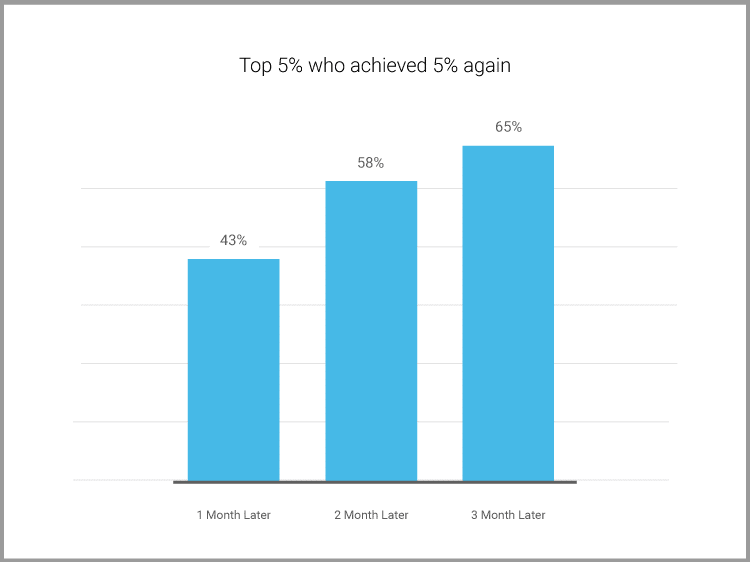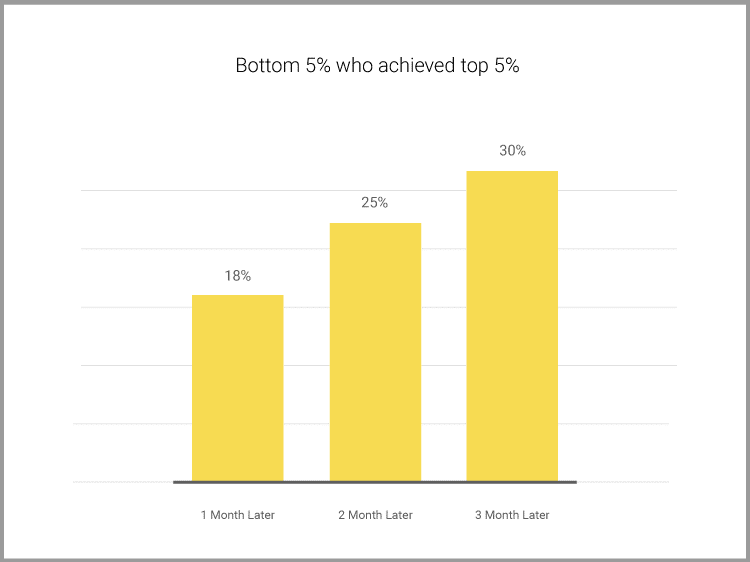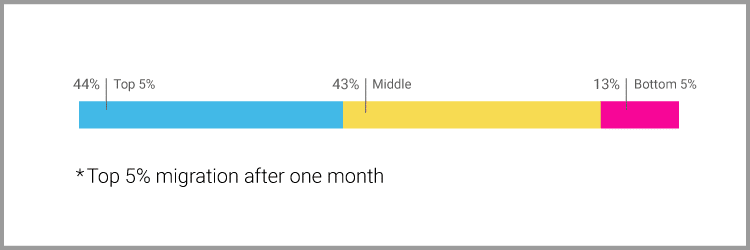Zona de Azar Israel – Optimove: The Importance of Recognizing the Top Winning Player

 Israel.- 24th January 2023 www.zonadeazar.com In the gaming industry, companies tend to focus on players who produce most of the revenue. A new Optimove research tested what happened on the other side of the scale – the players who won big – and uncovered how important they are.
Israel.- 24th January 2023 www.zonadeazar.com In the gaming industry, companies tend to focus on players who produce most of the revenue. A new Optimove research tested what happened on the other side of the scale – the players who won big – and uncovered how important they are.
We all know the 80%-20% pareto principle – 20% of customers will produce 80% of the income. This magic occurs also in the gaming industry – the benchmark shows that the top 5% of a brand’s players will produce 60% of the brand’s income. These so called ‘VIPs’ are the focus for most brands – trying to figure out how we can increase their size, and how we can get each one of them to play more often.
This way of thinking is right for many reasons. These players usually have high retention rate – they are willing to spend a lot of money on our brand, and in addition they are loyal and visit us often.
Many companies tend to create marketing plans and strategies to retain the players who generate a lot of revenue with a variety of bonuses and offers, but forget, or even exclude, players who win big and generate negative net revenue.
The question we want to answer in this article is should we even acknowledge our winners? And if so – how? We analyzed the behaviors of ‘winning’ players from 12 leading gaming brands across Europe during 2017 to come up with answers.
Smart marketers already recognize the importance of understanding their players’ experience with them. First, in order to identify a good or bad experience, thresholds are being defined – e.g. players who won more than X amount are winners and players who lost more than Y are losers. Or, in another example, using measures such as payout ratio – the total bet amount a customer won divided by the total bet amount that customer made. i.e. If a customer won $50 and bet $100, his or her payout ratio is 50/100=0.5.
Now, the rationale behind compensating a loser make sense, but why should we give something additional to our winners?
So, we checked. The first piece of our research shows the impact of new players’ experience during their first days from their initial deposit and analyzes their payout ratio and survival through the next days.

The pie charts above show that players with better payout-based-experiences have a much higher chance of being retained as active players – therefore, though it makes sense to compensate our losers, we can learn that we have a strong base to engage with our winning players, and come out with a successful retention plan around them.
Real Impact
Let’s dive deeper. Take for instance the average gaming company who wants to build a VIP CRM plan. First, it needs to define who these VIPs are. In many cases, a threshold is being defined (again) by deposit amount or revenue to flag the most valuable players. In our analysis, we didn’t set up a fixed threshold, due to variance between brands, but flagged the top 5% of the players who generated the most revenue in each brand as VIPs.
At first, we checked how many players of those 5% will remain at the top of the players list after several months. The results showed that VIPs had a very high retention rate as VIPs – 43% of them reached the top 5% again after just a month, 58% were back on the leader board after two months and 65% achieved the 5% threshold after three months.

We thought it might be useful to run the same analysis with a minor change. Now our starting point would be players who reached the lowest point of the pareto chart – the lowest 5% of players who generated the most negative net revenue of the business. With the help of this analysis, we would be able to understand what the chances are of a lucky/skilled winning customer to end up as a VIP:

From the bar chart above we can learn that our most negative players in terms of revenue, have a high chance to make it into the top 5%: Starting out at 18% after a month, and reaching 30% after only three months. What does this mean? That many of your big winners will end up as your big losers nevertheless.
As we pointed out, many companies exclude these kinds of segments from their marketing plans and communication strategies. But in order to have a continued communication with our VIPs we must understand that some of them, sometimes, will win big. Additionally, on that note, some of these winners will end up as losers who generate big revenues for your company. It’s important to understand this fluctuation. Here’s a good example, looking at the chart below: 13% of our top 5% will downgrade into the bottom 5% in just one month.
The recognition that our bottom 5% is made up of former VIPs and future VIPs will help us treat this segment with higher respect (and with more generous offers).

It’s in the net
Another method that can help us understand the importance of our big winners is the net revenue that they generate. As we understand, the net revenue of the bottom 5% is the most negative it can get on each period – but what happens next? Does this segment hold negative value after another period of time?
To answer this question, we defined our bottom 5% in net revenue in the last 2 weeks. This group, in most cases, is responsible for a very low distribution of the total net revenue of the company as it holds most of the company’s winners. (The revenue distribution is of course negative as we are dividing the negative net revenue of the group by the total positive net revenue of the business.)
After segmenting this group, we are analyzing the net revenue from it for the next period (the following 2 weeks) and again, calculating the net revenue distribution of this group among the entire business net revenue. Surprisingly, the results show that not only does the former bottom 5% group generate a positive net revenue, but that it is equal to 40% of what the former top 5% generated in the following period.
We must mention that there are still players who generated negative net revenue in the bottom 5% group at the following period, but as a group, it overcame the players wining by the additional losses.
In conclusion: When building CRM plans and communication flows, companies tend to forget that sometimes, our players win, and, in many cases, it is not a bad thing. Players winning drives higher retention, higher engagement with the product, reliability in the platform and at the end of the day – generate positive net revenue in the long run.
Creating funnels of communications with our winning players is not less important than targeting players who generate net revenue. The momentary negative value from a customer shouldn’t drives estrangement – on the contrary – a motivation can cause positive emotions among our winning players.
Author: Omer Liss
Edited by: @MaiaDigital www.zonadeazar.com